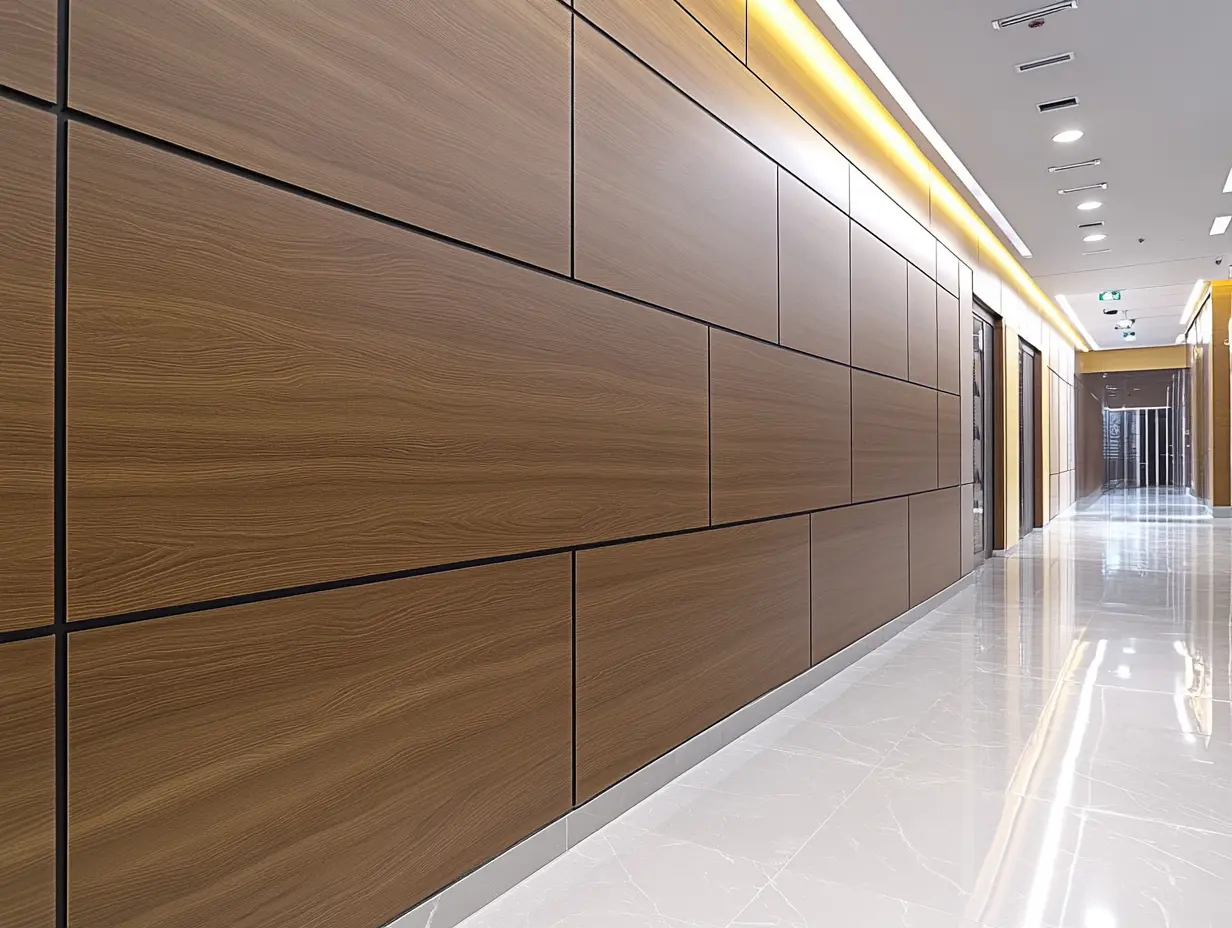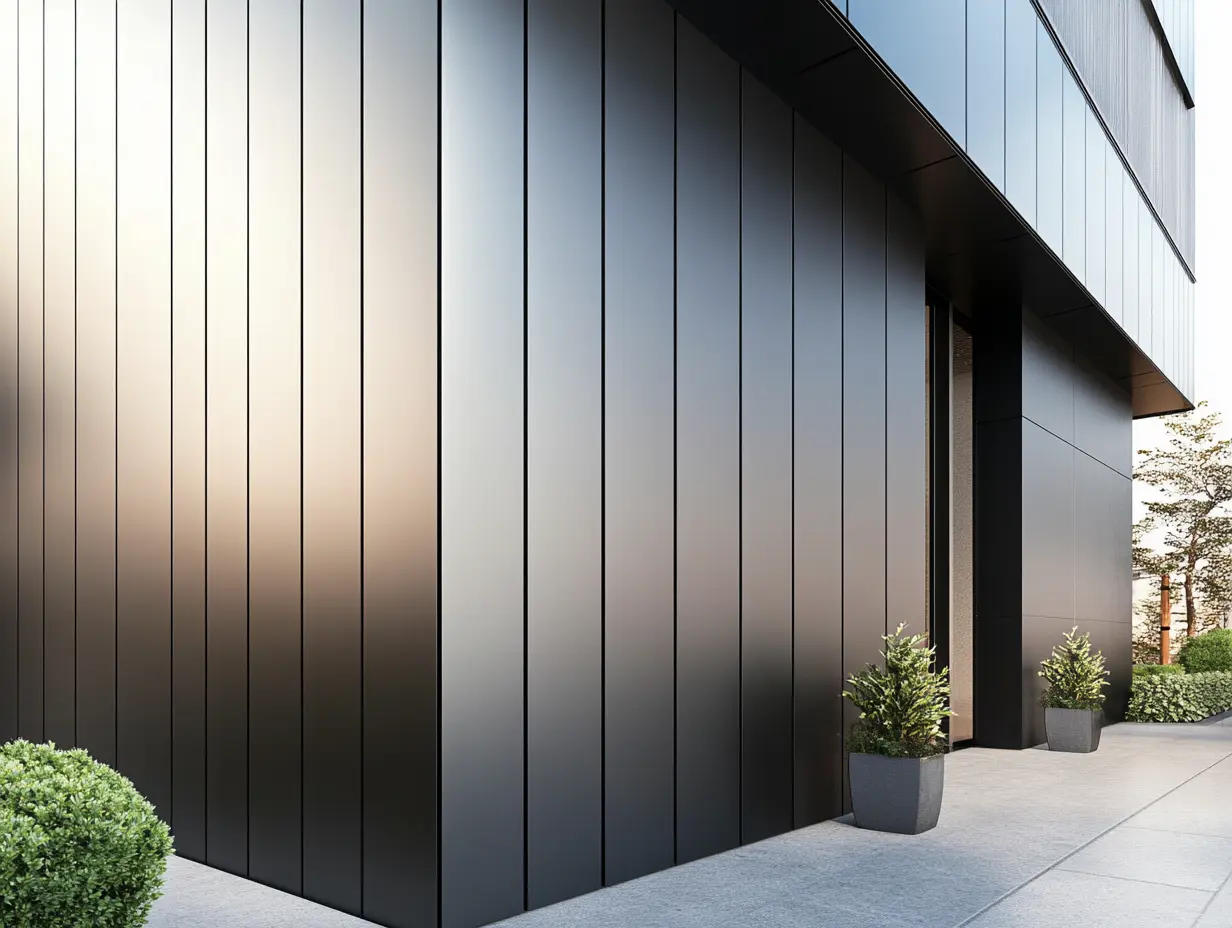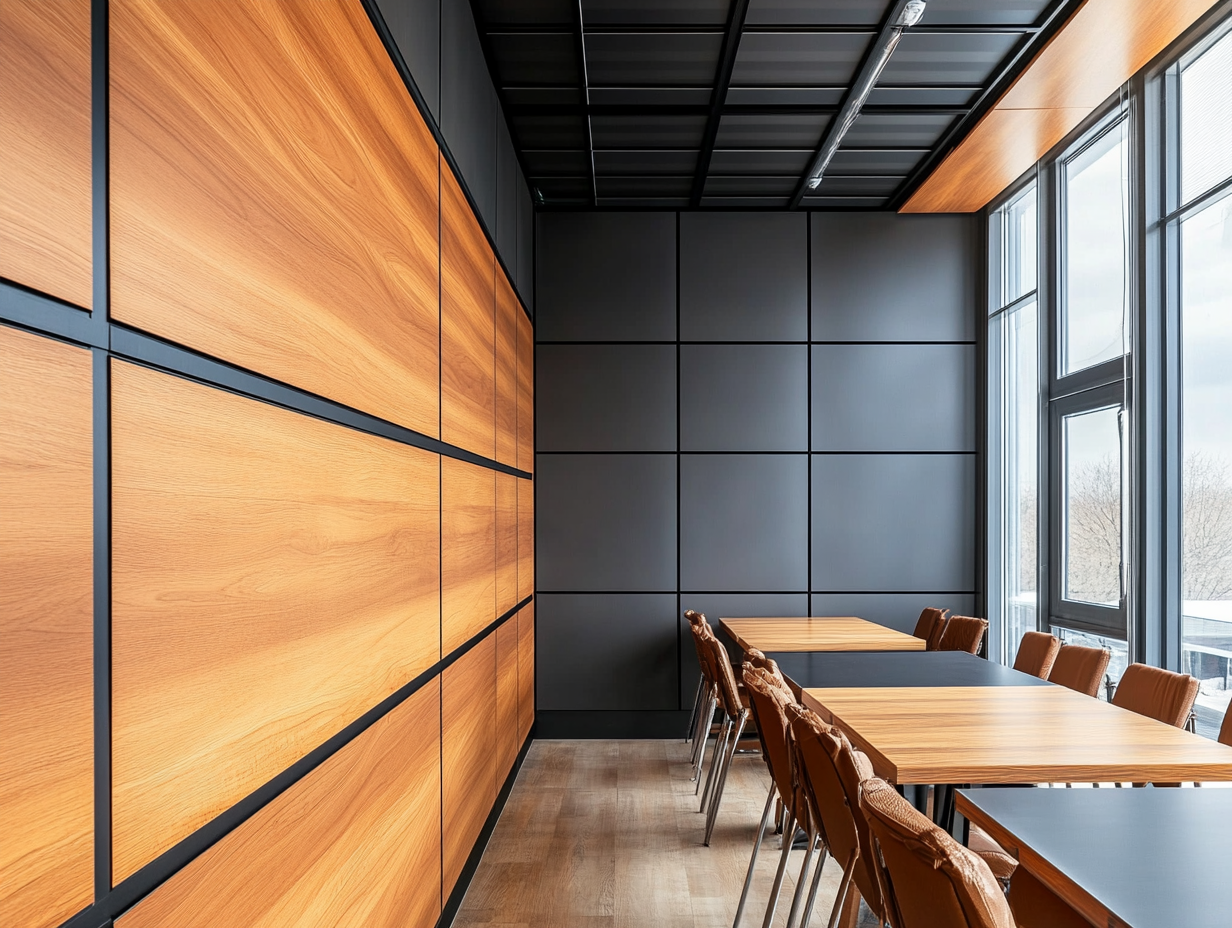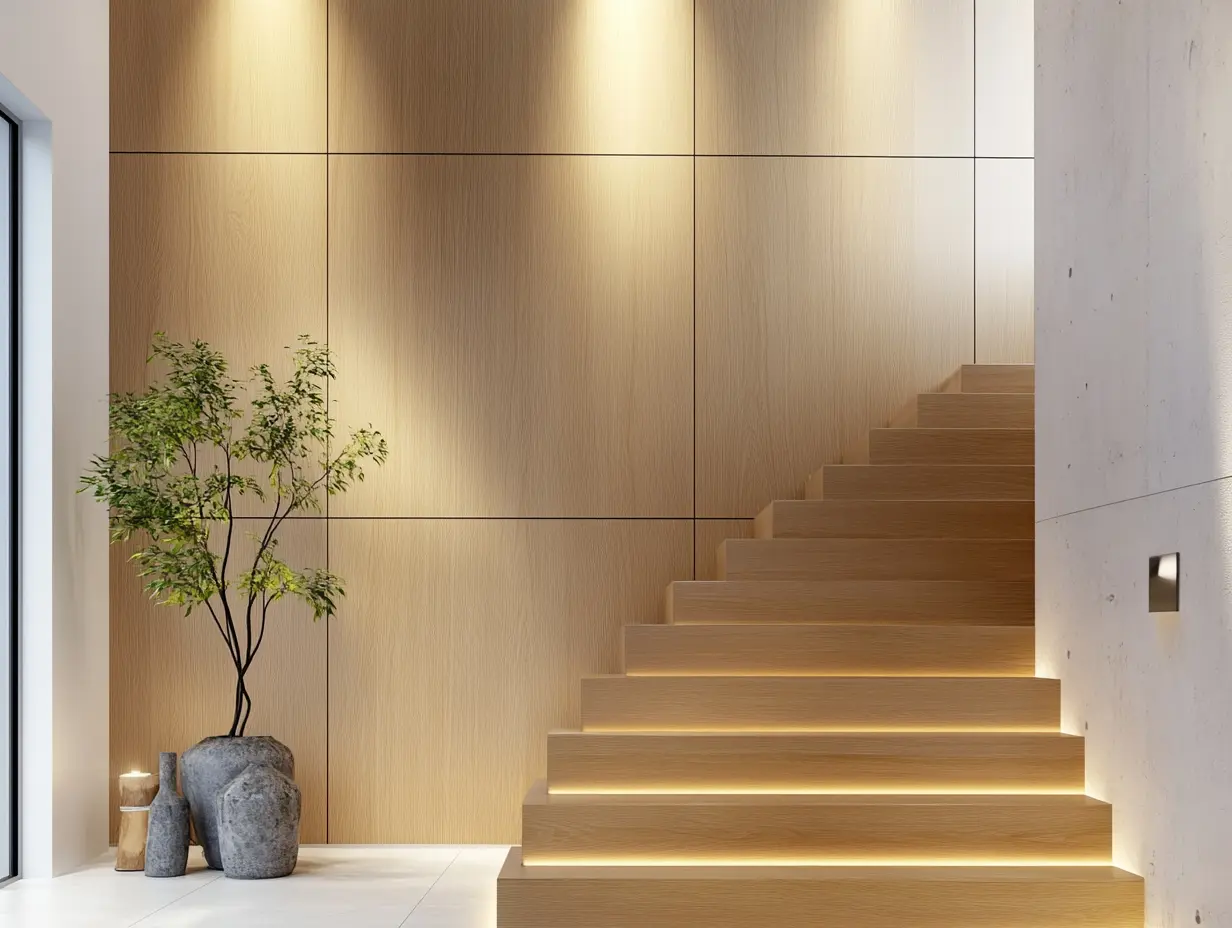Leave Your Message
Once these products became a material of choice for architects and builders that require not just durability but good looks, PVC Cladding Panels grew like fungus in the construction and design universe. As modern materials gain acceptance in the industry, it is crucial to understand the most significant aspects when sourcing these panels on the global market to ensure quality and sustainability. The ability of PVC Cladding Panels to survive many environmental elements while looking good gives them utility in a modern sense and modern approach towards building design.
Shandong Eco Decoration Materials Co. Ltd. is a company that integrates R&D, design, production, and sales while having rich expertise in foreign trade export. The company offers a wide range of products, including WPC for indoor and outdoor uses, wood veneer boards, UV boards, WPC-based decking, acoustic panels, and SPC floors. This array significantly meets clients' diversified needs while providing them with quality materials. In this blog, we discuss five vital insights for sourcing PVC Cladding Panels worldwide so that professionals in the industry will have the requisite knowledge to make informed decisions on their procurement practices.

The global PVC cladding panels market is growing speedily. Construction activity is rising in demand for multipurpose building materials. In particular interest was paid to sustainability and reasonable pricing; thus, PVC cladding panels have become a popular construction material for residential and commercial buildings. With China at the forefront of the market, the country has become a giant player in the manufacture and distribution of these products, winning ample share in the global demand. From the latest reports, the construction plastics market is valued at roughly US$112.3 billion as of 2023, with factors supporting growth up to US$187.1 billion by 2030. Consequently, more and more interest in PVC products has arisen owing to their durability, low maintenance, and good appearance. Opportunities for sourcing and investments look promising for other stakeholders in the PVC cladding panels market as manufacturers take to innovating and reaching out.

Ensuring successful sourcing of PVC cladding panels from all over the world requires the underlying identification of critical suppliers and manufacturers who can effectively assist you. The other side sees most, if not all, of the players in the PVC wall panels market, a fair share of which is held by manufacturers in China. This is a trend that gives opportunistic importers a chance to bring in quality products at competitive pricing.
On the whole, in sourcing, one should assess all of the manufacturing capabilities, qualifications, and reputations of potential suppliers. The employment of those manufacturers who, through their years of sustained operation, have developed a good reputation for producing durable yet stylish cladding panels, will affect the very quality of the final product. You should therefore scrutinize their production system much beyond its mere impersonal surface and churn out a detailed analysis of customer reviews, which will definitely guide you throughout this very rough-and-tumble of a marketplace.

When sourcing PVC cladding panels around the world, it becomes vital to heed international quality standards and certifications. As increasingly visible from the Grenfell Tower disaster, poor assessment of materials often results in dire consequences. An inquiry has exposed the dire need for enforcing a more stringent operation of safety regulations with the in-depth examination of all building materials, even those made of PVC. This would ensure that the available manufacturer and suppliers have their products in conformity with the requisite standards of trust and safety in construction.
In addition, fires are not the only dangers associated with combustible materials; they are only associated with cladding. Other fire hazards have now taken the backseat because of the focus on cladding, such as flammable window panels. This signifies that all the elements of a given building should be factored into a holistic certification process. Buyers also have to do their bit to avoid future catastrophes by being exceptionally careful in scrutinizing product certifications and historical compliance so that occupants in residential or commercial houses are safeguarded.

These panels are made from PVC and are rapidly emerging in the realm of architecture because they are inventive and versatile. Entrants into new materials actually include PVC. Here, the aesthetic possibilities range from bright colors through smooth finishes and thus are able to be used for outside facades and interior paneling. The lightweight property of PVC requires much easier installation in addition to having less load on structures.
But as we have learned lately about inquiries into building safety, the choice of material made has to be based on the fire safety aspect as well as on the design feature. Modernization approaches brought out by the sad incident of Grenfell Tower highlight the fact that not just cladding but also window panels may have the potential to pose risks if poorly chosen. With the recent heightening of concern over the safety of materials, the sourcing of PVC cladding panels now has to create a fine edge for creativity while also ensuring compliance to standards that are robust on safety in modern constructions. Responsible innovation will lead the industry's emergence towards safer and yet more beautiful architectural designs.
When planning a budget for global sourcing of PVC cladding panels, it is essential to do a thorough analysis of direct and indirect costs. These include the procurement costs of raw materials, freight, and tariffs applied to direct costs. Indirect costs could comprise safety and regulatory compliance costs and possibly allocated insurance premiums. Understanding such cost factors helps to avoid unplanned costs like the ones which have rubbed shoulders with some past projects.
Lessons from the Grenfell Tower event served to sharpen the memory with regard to safety and compliance in sourcing construction materials. To date, during the great hue and cry about the cladding, other major risk components such as flame ignitable window panels have been relegated to the background. By taking stock of all losses and costs pertaining to PVC cladding panels, it would then be possible for decision-makers to make sound decisions in a budget-efficient manner and at the same time raise the safety levels in their projects.
Surely, therefore, when it comes to the global sourcing of PVC cladding panels, sustainability must take centrestage. PVC production has been subject to severe criticism for many decades on resource usage and afterlife issues. The aftershock from the Grenfell Tower refurbishment has raised the banner for material not only by virtue of what they are made of but through ethical sourcing and lifecycle management.
Moreover, it opened up additional discussion areas dealing with safety issues associated with building envelopes in the post-Grenfell world, such as those related to the overlooked hazards from flammable window panels. Therefore, it must be a comprehensive approach to sourcing materials that would serve as a reference to safety as well as sustainability. This growing awareness being embraced by manufacturers and suppliers means that they, too, should embrace sustainability at the sourcing of PVC for aesthetic value versus "efficacious" safe homes for building occupants.
The aforementioned source would be important in understanding the global logistics and supply chain management when sourcing PVC cladding panels, especially when taking lessons from the Grenfell Tower tragedy. The disaster clearly points to how safety procedures must ensure that cladding and other related materials such as window panels do not become hazards, because they can be flammable.
Cost-effective procurement strategies need to consider safety and reliability of suppliers in addition to efficiency. Dealing in global markets means hurdles presented by various regulations and transportation difficulties, reinforcing the need for attention to new possible environmental hazards in materials. The proactive development of vinyl cladding panels may significantly reduce risks while ensuring compliance with international safety standards, as past failures influence evolving dialogue on building safety.
When sourcing PVC cladding panels, one must consider the multifaceted trade regulations and import duties that could drastically revise the buying strategy. Knowing these regulations fosters compliance and prevents unforeseen costs that could arise during import. Generally knowing what the applicable duties would be for your chosen countries could save your business plenty of valuable time and money.
In the wake of events such as the Grenfell Tower disaster, the scrutiny on building materials is sharper than ever, and regulations are tighter. Thus manufacturers and importers must be vigilant about the quality and safety of materials and about the very complex legal framework that governs them. Illuminating the many wrinkles in a market with sufficient insights allows for reasonable decisions toward safer building methods.
Building strong supplier relationships in the PVC industry mainly with some events such as Grenfell Tower refurbishment. The inquiry after that tragedy had indicated the importance of knowing broad materials used concerning cladding and safety compliance. Now, the supplier must also go a step further from openly talking about the quality and safety of their products but also making all efforts to avoid such failures in the future.
Furthermore, cladding concerns can also shift away attention from other hazardous materials, such as flammable window panels. Therefore, there is a need for strong collaboration between suppliers and builders in all aspects of safety concerning building materials. Through this open and trusting relationship, businesses can improve their sourcing strategy along with contributing to a safer built environment.
The PVC cladding markets are changing with concern to regulatory scrutiny and environmental considerations. Current talks about flammability of construction materials, especially after the Grenfell Tower incident, underscore the importance of strong safety regulations. While manufacturers look to innovate, the fire resistance of PVC cladding panels must be given top priority. This change has the potential to create new market opportunities where safety would counterbalance aesthetic considerations in the minds of architects and builders.
Sustainability will become a deciding factor in consumer preferences. Suppliers of recycled or sustainably sourced PVC panels will be favorably placed as demand for eco-friendliness rises in the industry. Ethical sourcing and amicable partnerships focusing on safety and sustainability will satisfy regulatory requirements and the very conscious consumer market.
Sustainability is crucial in PVC production and sourcing due to the environmental impact associated with resource use and the lifecycle management of these products. Events like the Grenfell Tower refurbishment have underscored the need for ethical sourcing and sustainable practices.
The Grenfell Tower incident has brought attention to safety concerns related to cladding and highlighted risks such as flammable window panels, emphasizing the need for comprehensive safety measures in material sourcing.
Manufacturers and suppliers can improve safety by being transparent about product quality and safety standards, fostering close collaborations with builders, and ensuring comprehensive safety measures are addressed in the sourcing process.
Strong supplier relationships are essential for ensuring material quality, safety compliance, and effective communication, which contribute to improved sourcing strategies and a safer built environment.
Trends in the PVC cladding market include increased regulatory scrutiny, a focus on enhancing fire resistance due to safety concerns, and a growing demand for eco-friendly materials among consumers.
Increasing consumer demand for sustainable and eco-friendly materials influences PVC sourcing practices by pushing manufacturers to provide recycled or sustainably sourced PVC panels, thus enhancing their competitive edge.
Suppliers can cater to the eco-conscious consumer market by engaging in ethical sourcing practices, offering sustainable materials, and highlighting safety alongside aesthetic appeal in their product offerings.
Transparency is vital in supplier relationships to ensure that all parties are aware of the quality and safety standards, which helps in preventing failures and promoting a safer construction environment.

